Many pet owners wonder about the safety of bully sticks as a treat for their furry companions. These natural chews, made from 100% beef muscle, have gained popularity for their durability and benefits. They help reduce stress, support dental health, and keep pets entertained for hours.
However, proper usage is crucial to ensure safety. Supervision is recommended to prevent choking hazards, especially as the treat diminishes in size. Choosing the right size and quality can make a significant difference in your pet’s experience.
This article will explore everything you need to know about bully sticks, from their production to nutritional value and safe feeding practices. Let’s dive into the details to help you make informed decisions for your pet’s well-being.
Key Takeaways
- Bully sticks are made from 100% beef muscle, offering natural benefits.
- They help reduce stress and support dental health in pets.
- Supervision is essential to prevent choking hazards.
- Choose the right size and quality for your pet’s safety.
- Proper usage ensures a positive experience for your furry friend.
Understanding Bully Sticks
Understanding the origin and production of bully sticks can help pet owners make informed choices. These natural chews, crafted from 100% beef muscle, have gained popularity for their simplicity and benefits. They are a durable option that keeps pets engaged while supporting dental health.
What Are Bully Sticks?
Bully sticks are made from the pizzle of a bull, also known as beef pizzles. This natural part of the animal is carefully processed to create a long-lasting chew. Sourced from grass-fed cattle, these treats are free from additives, making them a healthy choice for pets.
How Bully Sticks Are Made
The production process involves sun-drying or oven-baking to remove moisture. This method ensures the stick remains hard and durable, providing hours of chewing enjoyment. High-quality standards are maintained to preserve nutritional benefits and safety.
“The simplicity of bully sticks lies in their natural composition and careful processing.”
Choosing the right size is crucial for safety and enjoyment. A larger chew reduces the risk of choking and ensures a positive experience for your pet. Below is a table summarizing key aspects of bully sticks:
| Aspect | Details |
|---|---|
| Origin | Beef pizzle from grass-fed cattle |
| Processing | Sun-drying or oven-baking |
| Composition | 100% natural beef, no additives |
| Size Importance | Larger sizes enhance safety and durability |
Choosing the Right Bully Stick for Your Dog
Selecting the perfect chew for your furry friend requires careful consideration. The right size, shape, and quality ensure your pet enjoys a safe and satisfying experience. Let’s explore how to make the best choice for your pup.
Selecting the Proper Size and Shape
Matching the chew to your pet’s size and chewing habits is essential. Smaller breeds benefit from thinner or shorter options, while larger dogs need thicker, longer chews. This prevents choking hazards and ensures durability.
For aggressive chewers, braided or jumbo options are ideal. These provide added strength and longevity. Gentle chewers, on the other hand, may prefer standard thickness sticks.
Identifying High-Quality Chews
Quality matters when selecting a chew for your pet. Look for products sourced from grass-fed, free-range cattle. These are free from hormones and antibiotics, offering a healthier option for your pup.
Reputable manufacturers follow strict safety protocols, ensuring their products are free from contaminants. Vacuum-sealed packaging also helps maintain freshness and prevent contamination.
“High-quality chews not only provide enjoyment but also support your pet’s overall health.”
By choosing the right size and quality, you ensure your pet enjoys a safe and rewarding chewing experience. This promotes dental health and keeps your pup entertained for hours.
Introducing Your Dog to Bully Sticks
Starting with short chewing sessions can help your pet adapt smoothly. A gradual introduction ensures safety and prevents digestive upset. Supervised initial sessions are essential to monitor your pet’s reaction and avoid potential hazards.
Initial Chewing Sessions and Benefits
Begin with sessions lasting 5-10 minutes. This allows your pet to get used to the product without overwhelming their system. Always supervise to ensure they don’t swallow large pieces, which could pose a choking risk.
Bully sticks are a standard chew that offers multiple benefits. They provide mental stimulation, reduce stress, and promote dental health by cleaning teeth and gums. These qualities make them an excellent treat dog owners can trust.
For aggressive chewers, choose thicker or braided options to enhance durability. Gentle chewers may prefer standard sizes. Proper product selection ensures a positive experience for every pet.
“Supervised introductions and the right size chew are key to a safe and enjoyable experience.”
By following these steps, you can help your pet enjoy chew bully sticks safely. This approach not only prevents issues but also maximizes the benefits of this natural treat. For more tips on safe usage, visit this guide.
Supervision and Chew Time Guidelines
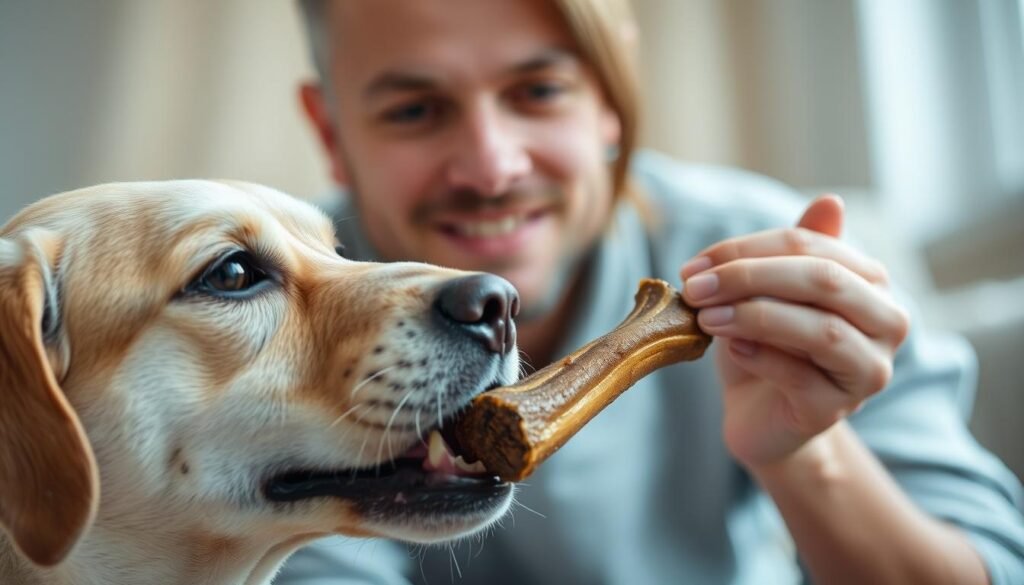
Ensuring your pet’s safety during chew sessions requires careful attention and supervision. Vigilant monitoring helps prevent potential risks, such as choking hazards or digestive issues. By following these guidelines, you can create a safe and enjoyable experience for your furry companion.
Monitoring Chewing Sessions
Always supervise your pet while they enjoy their chew. Watch for small pieces breaking off, as these can pose a choking hazard. If the chew becomes too small—typically around 2.5-3 inches—remove it immediately to avoid swallowing risks.
Continuous monitoring ensures your pet chews safely and reduces the risk of gastrointestinal blockage. This is especially important for aggressive chewers who may break off larger pieces.
Determining Appropriate Chew Duration
Start with short sessions, around 5-10 minutes, especially for pets new to chews. Gradually increase the time as they become accustomed to the treat. For adult dogs, limit daily chew time to 30-40 minutes to prevent overconsumption.
Overindulgence can lead to an upset stomach or other digestive issues. Always balance chew sessions with your pet’s overall diet and activity level.
“Supervision is the key to preventing accidents and ensuring your pet’s well-being during chew sessions.”
By following these guidelines, you can minimize risks and maximize the benefits of chew time for your pet. Always prioritize safety and enjoy watching your furry friend stay entertained and healthy.
Nutritional Benefits and Calorie Considerations
Understanding the nutritional value of natural chews can help pet owners make better dietary choices for their pets. These treats are packed with essential nutrients that support overall health and well-being. From aiding dental care to providing a high-protein snack, they offer multiple benefits.
Dental Health and Oral Hygiene
Chewing on natural treats helps maintain oral hygiene by mechanically scraping away plaque and tartar. This action promotes healthier tooth enamel and reduces the risk of gum disease. Regular use can lead to fresher breath and a cleaner mouth.
The texture of these chews is designed to reach areas that brushing might miss. This makes them an excellent addition to your pet’s dental care routine. Combined with regular vet checkups, they ensure optimal oral health.
Caloric Content and Feeding Moderation
While these treats are nutrient-dense, they are also calorie-rich. A single chew can contribute significantly to your pet’s daily caloric intake. Moderation is key to preventing weight gain and maintaining a balanced diet.
High in protein and low in fat, they support muscle development and energy levels. However, overfeeding can lead to digestive issues. Limit treats to a few times a week and adjust their regular meals accordingly.
“Balancing treat consumption with a healthy diet ensures your pet enjoys the benefits without the risks.”
By understanding the nutritional profile and caloric impact, you can make informed decisions for your pet’s health. Always prioritize moderation and quality to maximize the benefits of these natural chews.
Risks and Safety Precautions for Bully Sticks
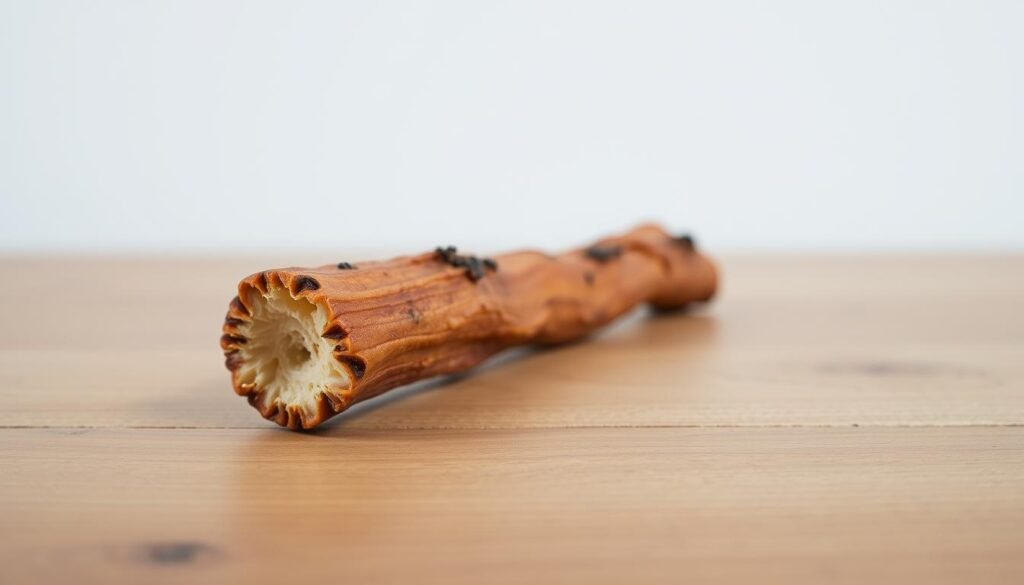
While many pets enjoy bully sticks, understanding potential risks ensures a safer experience. These natural chews offer numerous benefits, but improper usage can lead to hazards. By taking precautions, you can maximize the benefit bully stick provides while minimizing risks.
Choking Hazards and Digestive Concerns
One of the primary risks is choking, especially when the chew becomes small. Always supervise your pet and remove the treat when it’s around 2.5-3 inches long. Swallowing large pieces can cause digestive blockages, leading to discomfort or serious health issues.
For aggressive chewers, thicker or braided options are a safer option. These are less likely to break into smaller pieces. Gradual introduction can also help prevent digestive upset, such as vomiting or diarrhea.
Preventing Bacterial Contamination
Improperly processed chews can harbor harmful bacteria like Salmonella or E. coli. To avoid this, choose products from reputable manufacturers that follow strict safety protocols. Look for labels indicating U.S. production, as these adhere to FDA standards.
Proper storage is equally important. Keep chews in a cool, dry place to prevent bacterial growth. Avoid refrigeration, as moisture can encourage contamination.
“Choosing high-quality chews and supervising your pet are the best ways to minimize risks and maximize enjoyment.”
Below is a summary of key safety precautions to ensure your pet can enjoy bully sticks safely:
| Precaution | Details |
|---|---|
| Supervision | Always monitor your pet during chew sessions. |
| Size Selection | Choose thicker or braided options for aggressive chewers. |
| Storage | Keep chews in a cool, dry place to prevent contamination. |
| Quality | Opt for products from reputable, U.S.-based manufacturers. |
By following these guidelines, you can ensure your dog bully stick experience is both safe and enjoyable. Prioritize quality and supervision to provide your pet with a rewarding treat.
are bully sticks safe for dogs
Ensuring your furry friend enjoys their chew safely requires attention to detail and expert guidance. These natural treats offer numerous benefits, but proper usage is key to minimizing risks. By following best practices, you can provide a rewarding experience for your pet.
Safe Usage Practices
Supervision is essential during chew sessions. Watch for small pieces that could pose a choking hazard. Remove the treat when it becomes too small—typically around 2.5-3 inches. This prevents swallowing risks and ensures your pet’s safety.
Proper storage also matters. Keep chews in a cool, dry place to maintain freshness and prevent contamination. Avoid refrigeration, as moisture can encourage bacterial growth. These steps help maintain the quality of the treat.
Veterinarian Recommendations
Experts recommend consulting your vet if digestive issues arise. While these chews are generally safe, some pets may experience upset stomachs. Gradual introduction and moderation can help prevent discomfort.
“Always supervise your pet during chew sessions and choose high-quality products to minimize risks.”
Managing the natural odor is another consideration. Offering chews outdoors can help reduce the smell in your home. This simple step ensures a more pleasant experience for both you and your pet.
By following these guidelines, you can ensure your puppy enjoys their chew safely. Prioritize supervision, quality, and expert advice to provide a positive and healthy treat for your furry companion.
Conclusion
Pet owners often seek natural treats that promote health and happiness. When chosen and used correctly, these chews support dental health and provide mental stimulation. Quality safety standards ensure they remain a healthy option for your furry companion.
Supervision during chew sessions is essential to prevent risks. Gradually introduce the treat and monitor your pet’s reaction. This approach helps avoid digestive issues and ensures a positive experience.
Always select products from reputable brands like Redbarn or PeaksNPaws. Proper storage in a cool, dry place maintains freshness and prevents contamination. These steps guarantee your pet enjoys a safe and rewarding treat.
Share this information with fellow pet owners to promote broader awareness. Consulting your veterinarian for personalized advice is also recommended. Stay informed about new guidelines to keep your pet healthy and happy.
By keeping these tips in mind, you can provide a natural, beneficial treat for your pet. Prioritize quality safety and supervision to ensure their well-being. Together, we can create a safer environment for all pets.

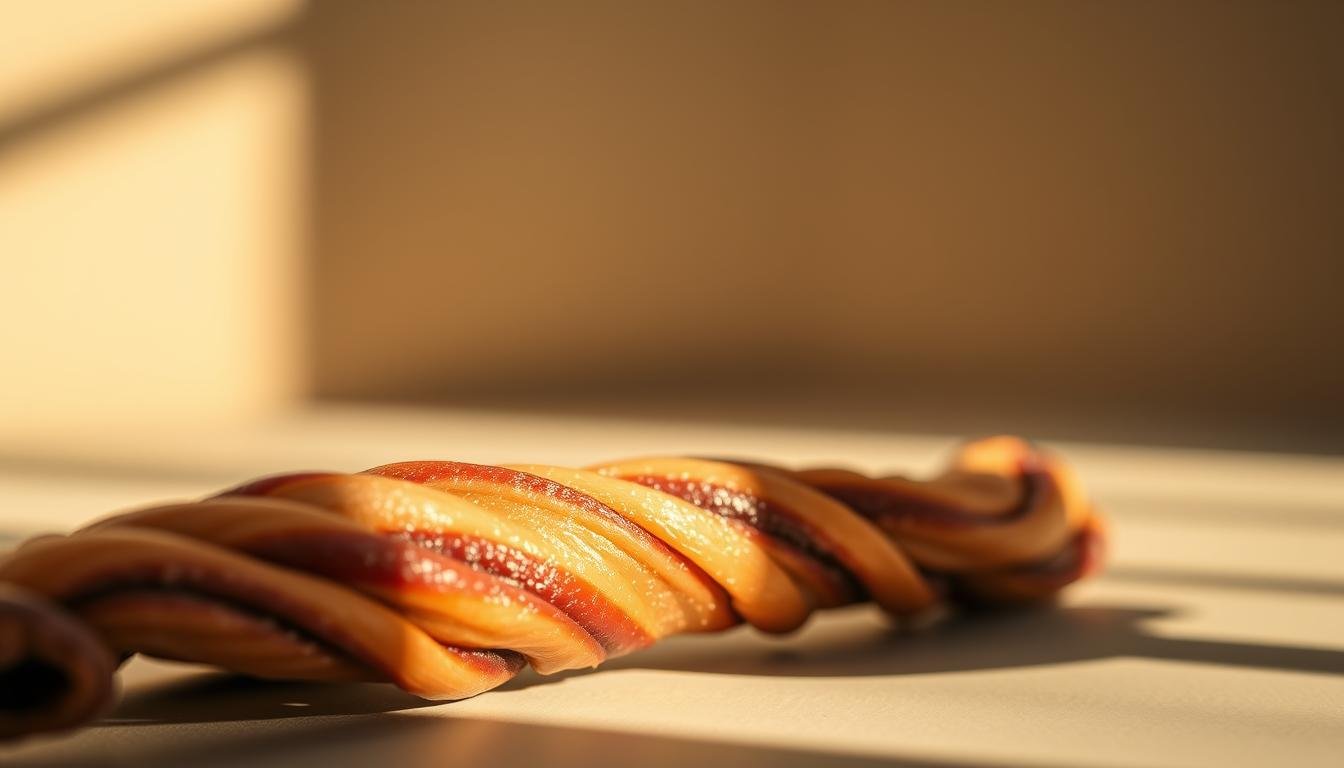
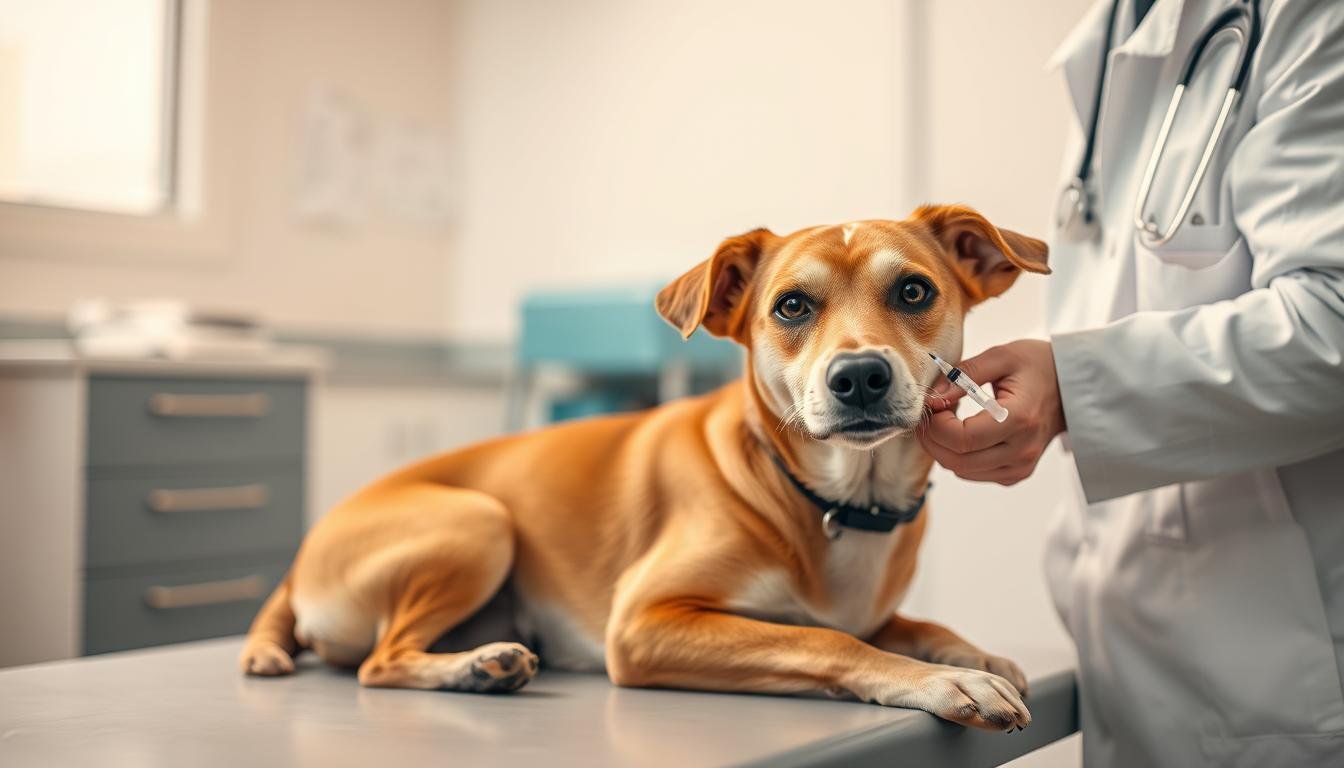
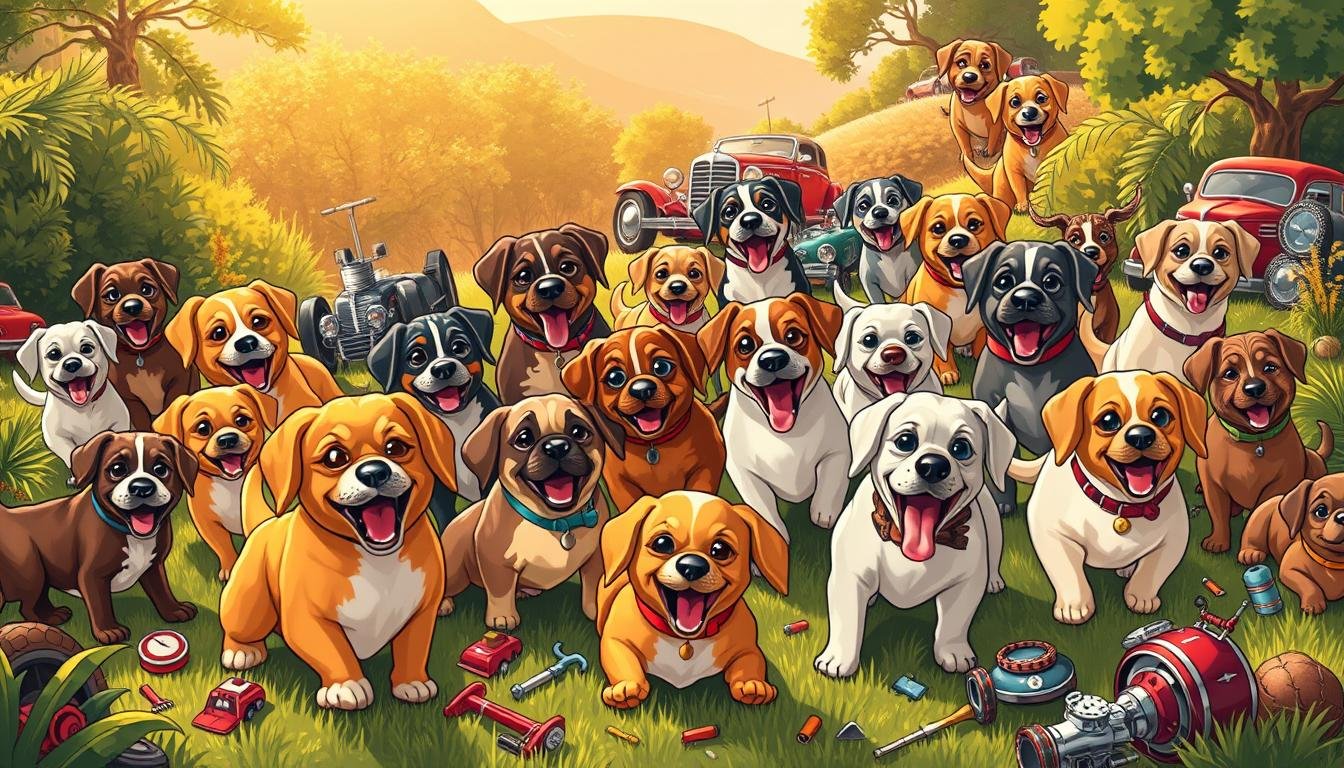

Are we really confident that bully sticks processing doesnt affect dogs health at all? Just seeking some reassurance.
While bully sticks may seem a treat, shouldnt we consider the possible bacterial contamination risk for our furry friends?
Is there any scientific proof that bully sticks are safe for dogs or is it just based on popular opinion?
Bully sticks are vet-recommended. Popular opinion wouldnt risk our dogs health. Do some research!